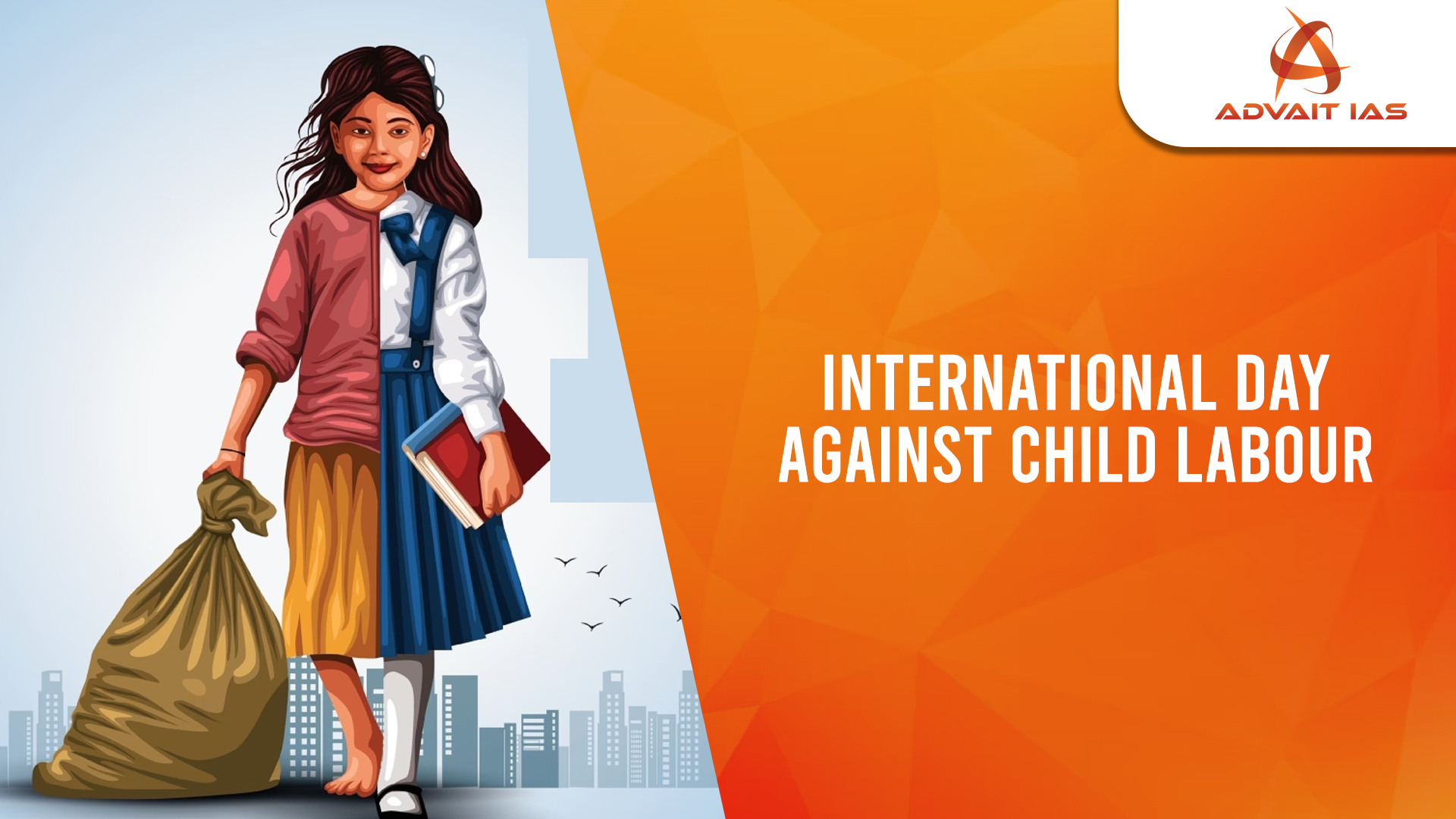Observed annually on June 12, the International Day Against Child Labour aims to raise awareness about the exploitation of children in labour and the urgent need for collaborative global action.
Global Child Labour Trends
- ILO and UNICEF (2021):
- Estimated 160 million children in child labour globally.
- COVID-19 pushed an additional 9 million into child labour due to economic shocks and school closures.
- Gender breakdown: 97 million boys, 63 million girls.
- 79 million involved in hazardous labour.
- Higher prevalence in rural areas (13.9%) vs urban areas (4.7%).
- 70% of child labour occurs in agriculture.
- 72% of child labour is in family-based work.
Child Labour in India: Status and Sectors
- Census 2011: Over 1 million child labourers (ages 5–14).
- Sectors employing children:
- Brick kilns, carpet weaving, domestic work, garment industry, agriculture, mining, fisheries, and food stalls.
- Major states: Bihar, Uttar Pradesh, Madhya Pradesh, Rajasthan, Maharashtra.
- Girls more likely to be out of school and engaged in unpaid domestic labour.
Root Causes in India
- Economic and Social Factors:
- Poverty and lack of decent work for adults.
- Inequality, caste and gender-based discrimination.
- Migration, weak law enforcement.
- Education Barriers:
- Inadequate infrastructure, high pupil-teacher ratios, lack of subject experts.
- Absence of safe sanitation for girls.
- Climate Change:
- Disrupts livelihoods, forcing children out of school to contribute economically.
Legal and Policy Framework in India
- Key Legislations:
- Child Labour (Prohibition and Regulation) Act, 1986, amended in 2016: bans employment of children under 14.
- Right to Education Act, 2009: guarantees free and compulsory education for children 6–14 years.
- Juvenile Justice Act, POCSO Act, Prohibition of Child Marriage Act – support child protection.
- Schemes:
- Samagra Shiksha, PM Poshan, National Child Labour Project (NCLP).
UN SDG Alignment
- SDG 8.7: End child labour, forced labour and modern slavery.
- SDG 4: Ensure inclusive, quality education.
- SDG 1: End poverty in all its forms.
Challenges in Implementation
- Persistence of invisible/hidden child labour in family enterprises.
- Higher risk among Dalit, tribal, religious minority, and migrant children.
- Gendered vulnerability: Girls are overburdened with household responsibilities and prone to exploitation.
- Lack of accountability mechanisms and coordination between departments.
Way Forward: A Multi-Stakeholder Approach
- Strengthen Law Enforcement: Plug legal loopholes, strengthen inspections and penalties.
- Improve Education Access and Quality: Prioritize rural schools, teacher recruitment, girl-friendly infrastructure.
- Expand Economic Support: Cash transfers, employment schemes, nutrition and healthcare support.
- Community Engagement: Local leaders, NGOs, SHGs to raise awareness and report violations.
- Corporate Responsibility: Ensure ethical supply chains, regular audits to eliminate child labour.
- Data and Monitoring: Improve tracking of child labour, particularly in informal sectors.
Child labour is a violation of human rights and dignity. Its eradication requires collective responsibility — from the government, civil society, communities, and businesses. Addressing child labour is key to achieving inclusive growth, gender equality, and India’s demographic dividend.






